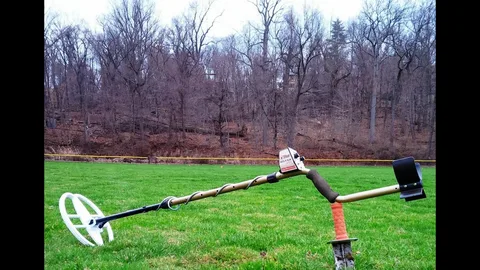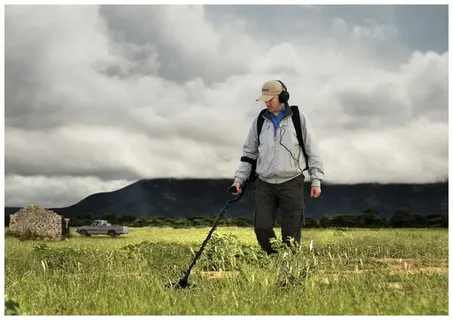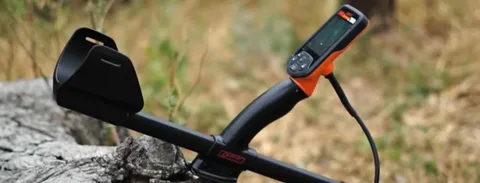Gold prospecting for beginners is an exciting and rewarding hobby that allows you to hunt for valuable treasures in the great outdoors. Whether you’re interested in finding small flakes or striking it rich with a nugget, this Beginner’s Guide to Gold Prospecting: Tips and Tricks for Success is the perfect resource to kickstart your journey. In this guide, you’ll learn the basics of gold prospecting, essential equipment, and expert tips to increase your chances of success. So, grab your gear and get ready to embark on an adventure in search of
The Beginner’s Guide to Gold Prospecting: Tips and Tricks for Success is a comprehensive resource for those new to the world of gold prospecting. This guide covers the basics of gold prospecting, including information on the equipment needed, techniques for finding gold, and tips for success. Whether you’re interested in panning for gold in a local river or exploring more advanced prospecting methods, this guide has you covered. With practical advice and expert insights, this resource is designed to help beginners achieve success in their gold prospecting endeavors.
The Basics of Gold Prospecting for Beginners

Gold prospecting for beginners involves learning the basic techniques and tools needed to search for and extract gold from the earth. This can include learning how to use a gold pan, sluice box, metal detector, and other equipment to find gold in rivers, streams, and even on land. Beginners should also learn about the different types of geological formations and indicators that may lead to gold deposits, as well as the laws and regulations governing gold prospecting in their area. Additionally, it’s important for beginners to understand the potential risks and dangers associated with prospecting, such as environmental impact, trespassing, and personal safety. Overall, the basics of gold prospecting for beginners involve knowledge of equipment, techniques, laws, and safety measures.
A Step-By-Step Guide to Gold Prospecting for Novices
See also: metal detectors for gold

A Step-By-Step Guide to Gold Prospecting for Novices is a comprehensive resource that offers practical advice and techniques for those new to the hobby of gold prospecting. The guide covers topics such as understanding the basics of geology and how to identify potential gold-bearing areas, using the right equipment and tools, and techniques for panning, sluicing, and metal detecting. Additionally, it provides tips for researching and scouting for prospective locations, as well as guidance on navigating legal and environmental considerations. Whether you’re interested in gold prospecting as a recreational activity or a potential source of income, this guide equips novices with the knowledge and skills needed to get started on their prospecting journey.
Getting Started with Gold Prospecting: Tips for Beginners

Getting started with gold prospecting can be an exciting and rewarding endeavor. For beginners, it’s important to familiarize yourself with the basics of gold prospecting, including understanding the geology of gold, how to find gold-bearing areas, and the necessary equipment and techniques for successful prospecting.
One key tip for beginners is to research and learn about the geology of gold and how it is formed. This can help you identify potential gold-bearing areas and increase your chances of success.
Additionally, investing in the right equipment, such as a gold pan, sluice box, and metal detector, can greatly improve your prospecting efforts. Learning how to properly use these tools and techniques, such as panning for gold in a stream or using a metal detector to locate gold nuggets, is essential for beginner prospectors.
Joining a local prospecting club or seeking guidance from experienced prospectors can also provide valuable knowledge and tips for beginners. These resources can help you learn about prospecting regulations, best practices, and prime locations for finding gold.
Overall, getting started with gold prospecting as a beginner involves educating yourself on the fundamentals, investing in the right equipment, and seeking guidance from experienced prospectors to increase your chances of success.
Learning the Art of Gold Prospecting: A Beginner’s Guide

“Learning the Art of Gold Prospecting: A Beginner’s Guide” is a comprehensive resource for individuals interested in starting their gold prospecting journey. The book covers essential topics such as understanding gold geology, using the right equipment, identifying potential gold-rich locations, and techniques for effectively extracting gold. It also provides practical tips and advice from experienced prospectors to help beginners avoid common pitfalls and maximize their chances of success. With detailed explanations and helpful illustrations, this guide is a valuable tool for anyone looking to learn the art of gold prospecting.
Essential Equipment for Beginner Gold Prospectors
Beginner gold prospectors should invest in a good quality gold pan, as it is essential for cleaning and separating gold from other materials. A basic gold panning kit typically includes a pan, classifier, snuffer bottle, and a magnifying glass.
A small shovel or trowel is also necessary for digging and moving gravel, dirt, and sand. Additionally, a classifier sieve can help to separate larger debris from the smaller material that is likely to contain gold.
A reliable pair of gloves is recommended for handling sharp or abrasive objects in the field. A sturdy pair of boots with good ankle support is important for walking on uneven and rocky terrain.
A basic gold prospecting book or guide can also be helpful for learning about the different techniques and tools needed for successful gold prospecting. It is important for beginners to do their research and make informed decisions when investing in equipment for gold prospecting.
Common Mistakes to Avoid When Gold Prospecting for Beginners
1. Overlooking research: One common mistake is to head out without doing proper research on potential sites for gold prospecting. Understanding the geology and history of an area can greatly increase the chances of success.
2. Not having the right equipment: Beginners often make the mistake of not investing in the proper tools and equipment for gold prospecting. This can hinder their ability to effectively search for and extract gold.
3. Failing to obtain permission: Some beginners make the mistake of prospecting on private or protected land without obtaining the necessary permissions. This can lead to legal trouble and land access issues in the future.
4. Not properly testing for gold: Some beginners may overlook the importance of properly testing for gold in the ground. Failing to use methods such as panning, sluicing, or metal detecting can result in missed opportunities.
5. Giving up too soon: Gold prospecting often requires patience and persistence. Beginners may make the mistake of giving up too soon if they don’t find gold right away. It’s important to stay committed and continue learning and refining prospecting techniques.
6. Ignoring safety precautions: Safety should always be a top priority when gold prospecting. Beginners may make the mistake of not taking proper safety precautions, such as using protective gear and being mindful of their surroundings.
By being aware of these common mistakes and taking steps to avoid them, beginners can improve their chances of success in the rewarding hobby of gold prospecting.
Finding the Best Locations for Beginner Gold Prospectors
One of the best ways for beginner gold prospectors to find promising locations is to research historical gold mining areas. These areas have a proven track record of yielding gold and can be a good starting point for prospecting. Additionally, beginner gold prospectors can also look for streams, rivers, and creek beds that have a history of producing gold. These natural waterways can be prime locations for finding gold deposits. It’s also important for prospectors to obtain necessary permits and permissions before beginning their search for gold. Joining a local prospecting club or seeking advice from experienced prospectors can also provide valuable insights into finding the best locations for gold prospecting.
Understanding Gold Geology for Newbie Prospectors
Understanding Gold Geology for Newbie Prospectors can be a daunting task, but it is crucial for success in gold prospecting. Gold is often found in quartz veins, and understanding the geological processes that have led to the formation of these veins can help prospectors locate areas with potential gold deposits. Additionally, understanding the types of rocks and minerals commonly associated with gold can further aid in prospecting efforts. It is also important to understand the concept of “placer deposits,” which are concentrations of gold that have been eroded from their original source and deposited in riverbeds or other sedimentary environments. By gaining a solid understanding of gold geology, newbie prospectors can improve their chances of finding gold and ultimately achieving success in their prospecting endeavors.
Gold Panning Techniques for Beginners: A How-To Guide
Gold panning is a technique used to extract gold from rivers and streams. Beginners can use simple tools such as a pan and a classifier to start panning for gold. The process involves carefully swirling the pan to separate the gold from the surrounding sediment. Beginners should also be aware of the best locations to pan for gold, as well as the proper techniques for handling and cleaning the gold once it has been collected. Additionally, it’s important to research and understand the local regulations and laws regarding gold panning in specific areas. Practice and patience are key when it comes to mastering the art of gold panning.
The Thrill of the Chase: Beginner’s Guide to Gold Prospecting
The Thrill of the Chase: Beginner’s Guide to Gold Prospecting is a comprehensive book that provides all the essential information for those interested in trying their hand at gold prospecting. It covers topics such as the history of gold prospecting, the different methods and techniques used for prospecting, understanding gold-bearing geology, and how to use the right equipment. The book also includes tips for finding the best locations to search for gold, ensuring safety while prospecting, and how to effectively pan and extract gold from the earth. Whether you are a complete beginner or have some experience in gold prospecting, this guide is a valuable resource for learning and honing your prospecting skills.










